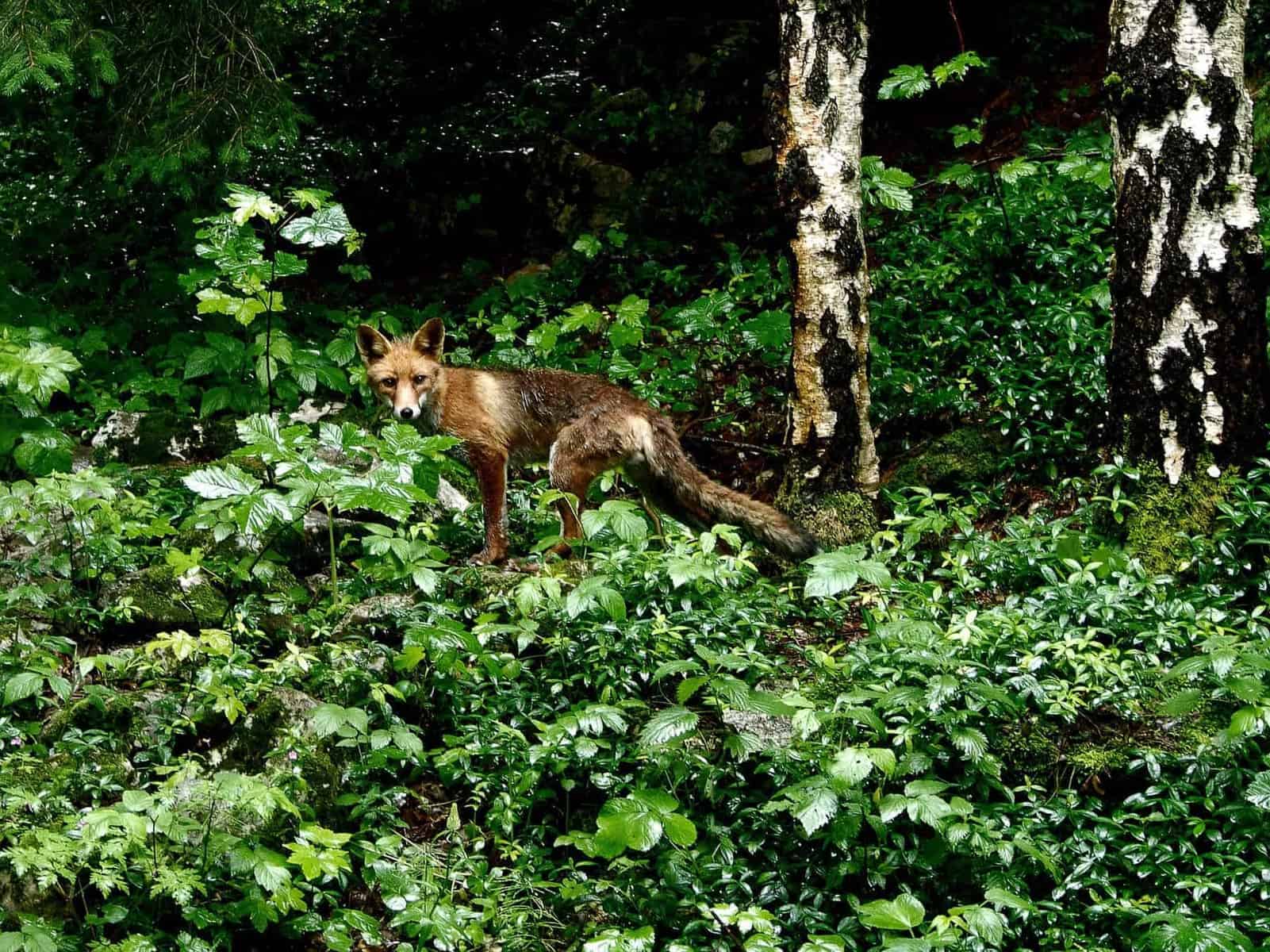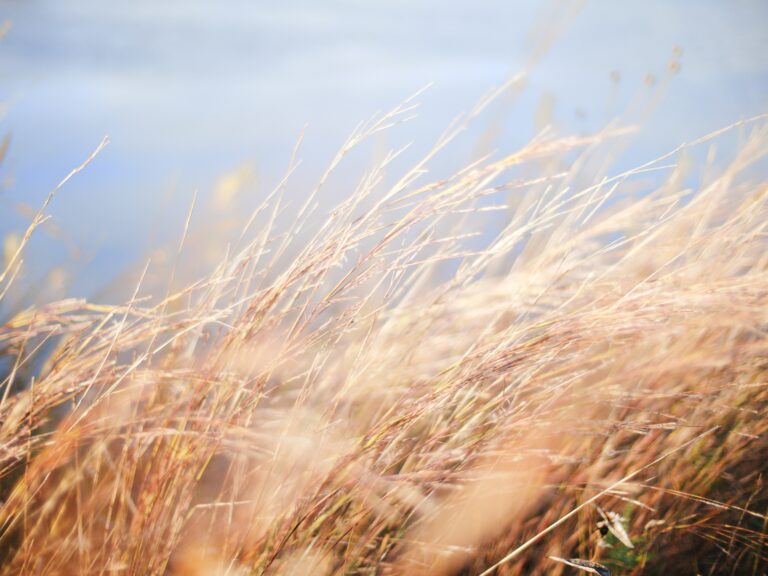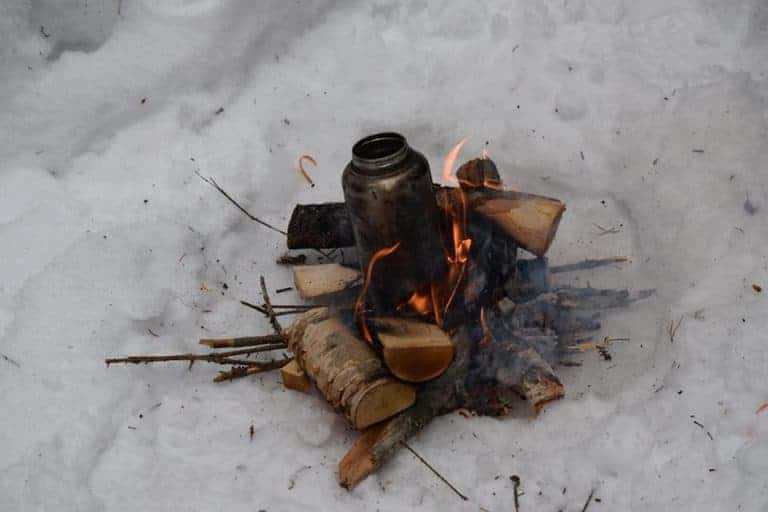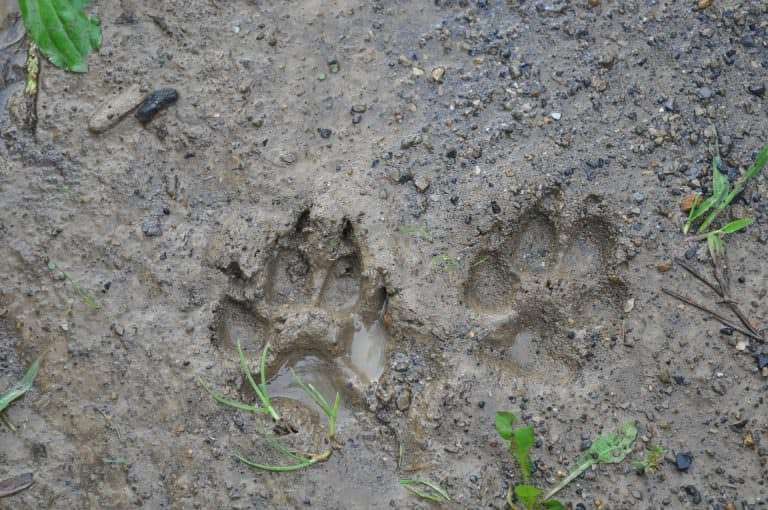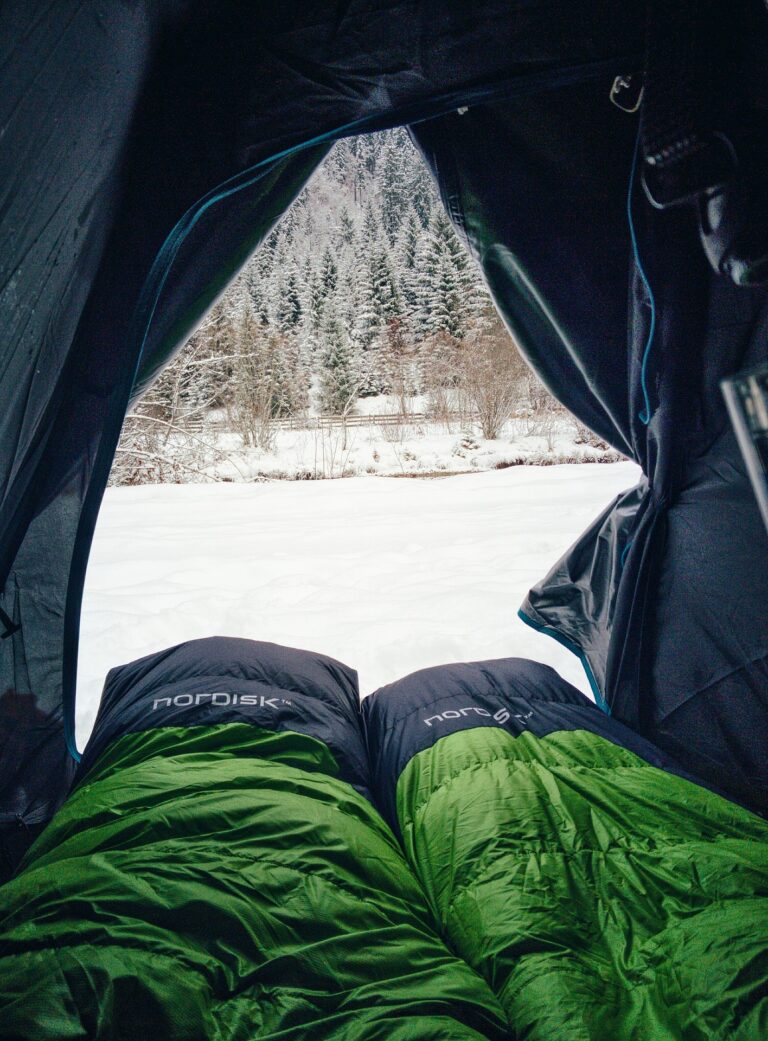Poo, Prints & Pawmarks
Poo, Prints and Paw Marks
Heading out into the woods, whether to set up camp, or to simply explore can be a great opportunity to escape the fast pace of modern life. Peace and quiet as well as time to switch off. Many people relish this opportunity for some alone time, but are you really alone?

Look around you and you’ll find evidence that you have company. But don’t worry, as this is good company to keep!
Here in the UK we are lucky to have a variation of wildlife living in our woodland, but how can you tell who is keeping you company when many of them are timid creatures? Poo, prints and paw marks, that’s how!
By studying the ground around you, especially through muddy patches, or snow if you have some, you will start to see the evidence around you.
As well as prints, poo is also a great indicator of who is there with you, or who has passed by. Animal poo, also referred to as scat, can tell you many things about an animal. Firstly, which animal it is, but also about their diet, their health and how recently they’ve been there.
Let’s take a closer look at 5 species you are likely to find here in the UK when you head out on your adventures.
Rabbits-
The wild rabbits that we see today originated in Spain and Southern France. They were introduced to the UK by the Normans in 12th Century as a source of meat and fur. 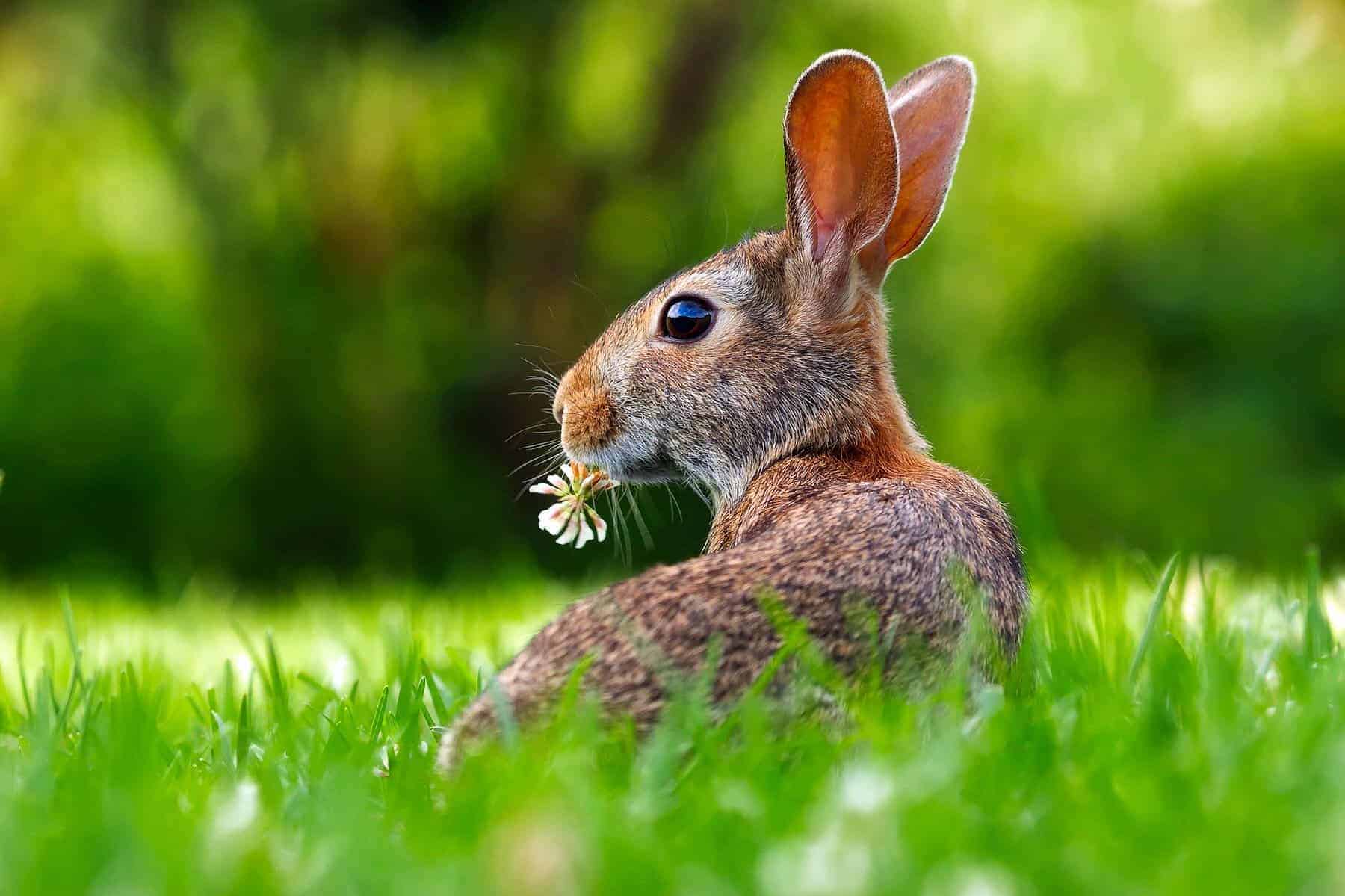
These ground dwelling mammals are mainly active at night but can also be seen out grazing during the day if there aren’t too many predators in the area.
Rabbits are herbivores, feeding on grass, leafy weeds and gnawing on tree bark to help their dental health. They re-swallow 80% of their faecal matter to allow their body to absorb as many nutrients from the ingested food as possible. This allows them to be more efficient.
Their poo, or scat, is small pea sized nuggets and are usually black or dark brown in colour and made up of plant matter. Rabbits often scatter their droppings in their latrine areas which are usually situated near the burrow entrances. They do this to keep the burrow system clean and as a means of marking their territory.
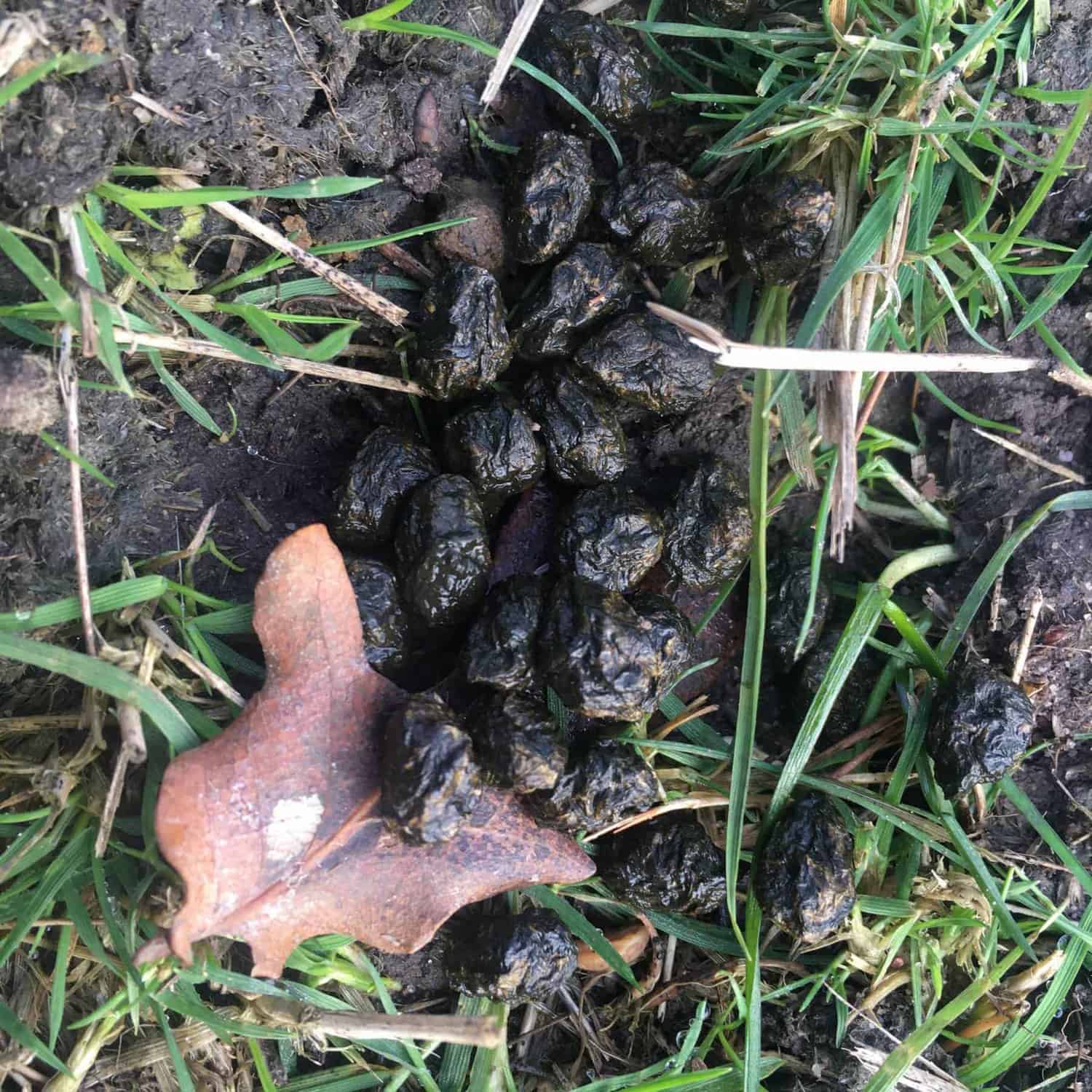
Only stopping to graze or check for predators the rabbit moves in a deliberate manner. Their hind paws, which are longer than their fore paws, leave elongated paw prints. The hind limbs imprint a wide stance of both hind paws at the same time. The fore paws move forward independently and leave a smaller rounder print. These are best seen in mud or snow to give a clear track. Rabbits are social animals so many prints are usually found in a similar area as they live in family groups.
Red Fox
Part of the canine family, this orangey red mammal is characterised by its infamous bushy tail, known as its brush.
These distinctive creatures can now be found in both towns and countryside. Out in the woodland they are in their natural environment and their instinctive behaviour patterns can be seen. They become most active from dusk well into the cover of darkness hunting through until dawn, patrolling their territory for feeding opportunities.
The fox will silently stalk its prey, progressing in slow deliberate moves. It stops regularly to listen, and then when in striking distance it rears up on its hind legs and pounces down on its prey in one powerful motion. They evolved as mousers and have a high pouncing angle to allow them to capture prey through even thick layers of snow. They adjust this angle depending on the size of prey and whether it is above or below ground.
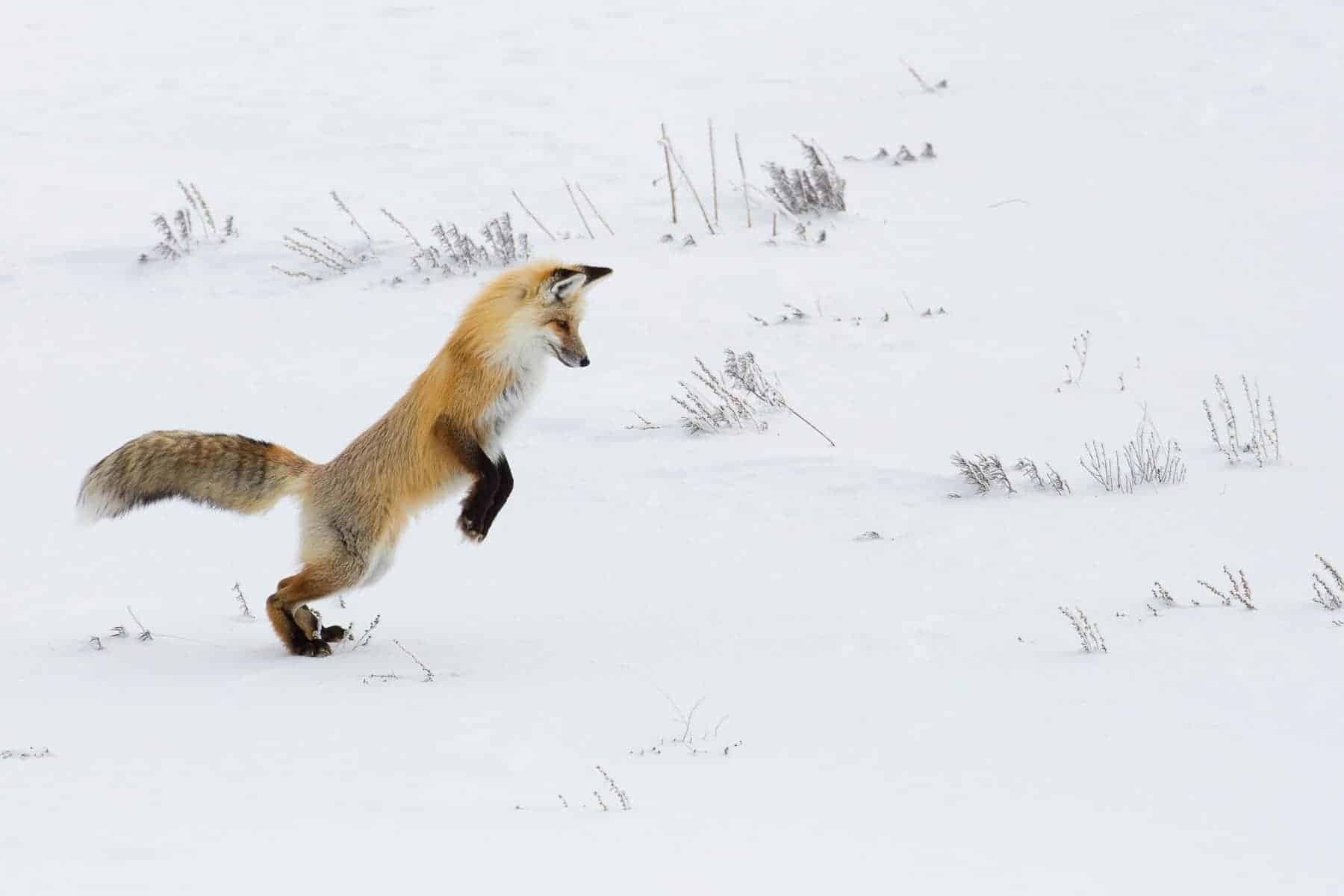
Foxes have a diverse diet eating rabbit, rodents, birds, frogs and insects. They are in fact omnivores so can also be seen grazing hedgerows for berries or eating fruit fallen from trees.
This varied diet is often evident in their poo too! Fox scat is a very similar shape to a dog’s. They are usually pointy at one end and full of bones, feathers, fur and seeds from berries they have foraged. Fresh droppings have a very distinctive smell, almost musky. If your dog has ever rolled in it you’ll be all too familiar with the smell.
If you can’t smell them or haven’t seen them then check the ground for tracks. Foxes have 4 toes, 2 toes at the front with 2 toes slightly further back on either side. Below these you’ll see the main oval shaped pad. These appear very similar to a dog’s. The foxes print is usually narrower than a dog’s and gives a diamond shaped appearance to each paw print. In comparison a dog’s print is generally wider and leaves a rounder shape.
A fully grown male fox will leave a paw print of approximately 5cm in length and 4cm wide, so if the print you have found is wider than this then chances are you’re looking at a dog print instead. Obviously confusion may occur when looking at a smaller fox’s track compared to a small breed of dog.
It’s also worth knowing that foxes will move with a definite purpose so their tracks tend to be straight, compared to a dog’s track which is usually erratic in nature.
Badger
Badgers are ground dwelling nocturnal mammals. Their setts are a series of burrows dug with their long claws. They are usually found in broadleaf woodland preferring well drained soil. As well as reducing the chance of flooding, well drained soil is far easier for them to dig and make their home.
There is usually one main sett where they live for most of the year and where they rear their young. But within the badger’s territory there will also be up to 6 other smaller setts. These are used during the warmer months as places to rest when they are out on longer feeding and foraging sessions.
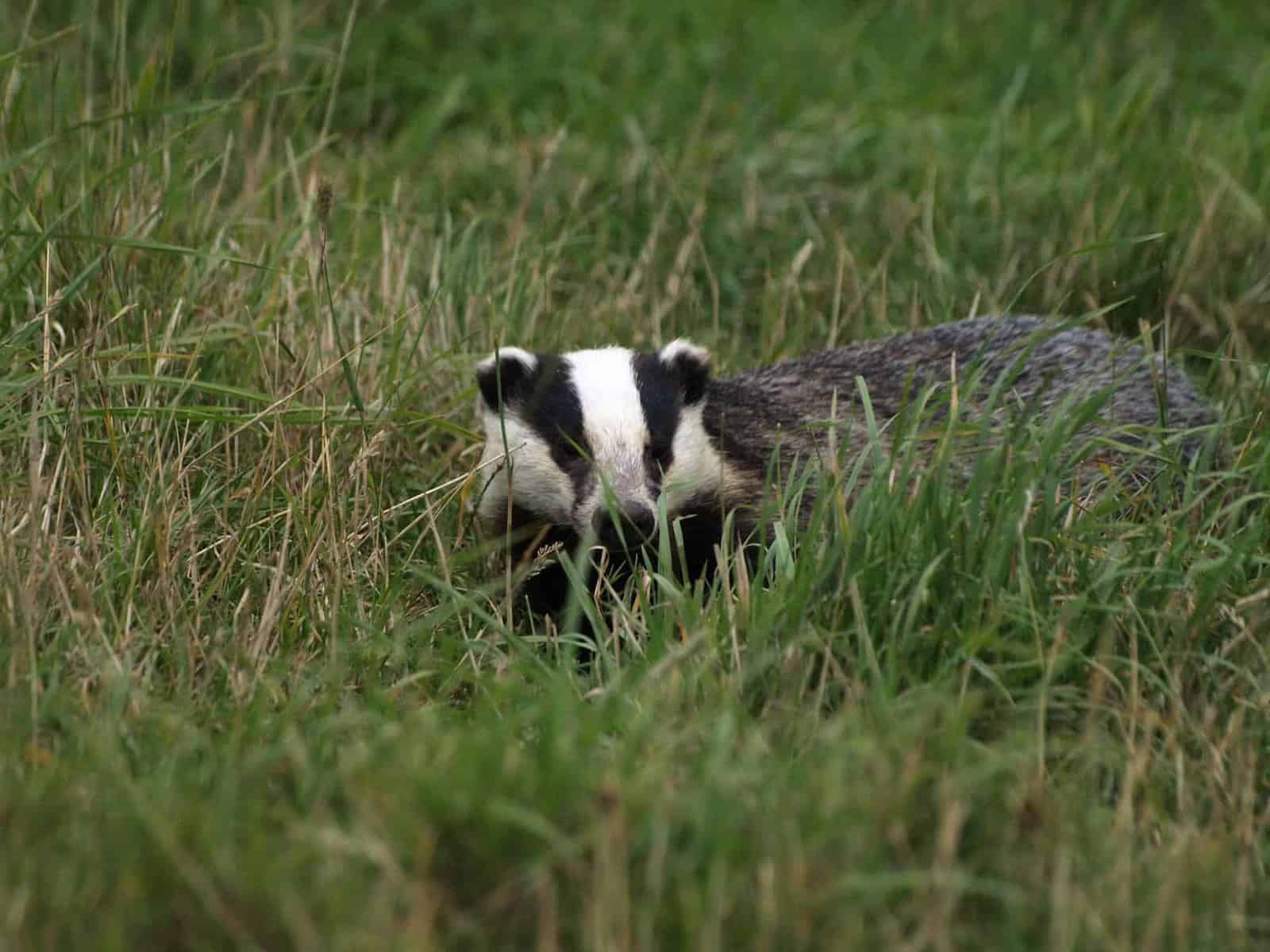
These are generally clean creatures and will clean out their setts on a regular basis, removing old plant matter that they have used for bedding material.
Badgers are in fact omnivores foraging fruit from hedgerows, but a staggering 80% of their diet is made up purely of earthworms. They have to eat several hundred earthworms a night. This is another reason that they prefer broadleaf woodland as earthworms are plentiful there.
Their acute sense of smell and long claws help them to dig into the soil and find the worms along with other insects they will happily eat too. Badgers also eat slugs, snails and small mammals including rabbits, rodents and hedgehogs. They are in fact the main predator of the hedgehog and one of the only animals to have claws long enough to get past the hedgehog’s prickly defence.
Just like other ground dwelling mammals, badgers will poo outside of their setts to keep their living quarters clean and to reduce the chance of parasite infestation.
Badgers dig small pits to use as latrines, this also helps to mark their territory and they are fiercely territorial animals.
Their droppings can vary depending on what food is available at that time of year. They vary from firm, sausage shaped poo to dark, soft and slimier when they had an abundance of foraged fruit and earthworms……yum! Their droppings have a sweeter mustier smell compared to that of a fox, just in case you’d like to compare odours.
Badger paw prints are approximately 5cm long and 6.5cm wide. Compared to the longer, smaller, diamond shape of the fox track, the badger has a distinctive wide print. The badger has 5 toes, all positioned forward of the broad oval shaped pad. Their long claws that enable them to be efficient diggers, leave distinctive marks in front of the toe prints in the mud or snow too.
Deer
Six species of deer live here in the UK, with Red and Roe deer being the only native species. Though as Fallow deer have been here since the 11th Century they are also included as part of our heritage.
Red, Roe, Fallow, Sika, Chinese Water Deer and Muntjac can all be found at various location across the UK, but they all favour a similar habitat. Deer are generally shy creatures and prefer the cover of forests and woodland, but some species have adapted to cope with open areas of grass and moorland.
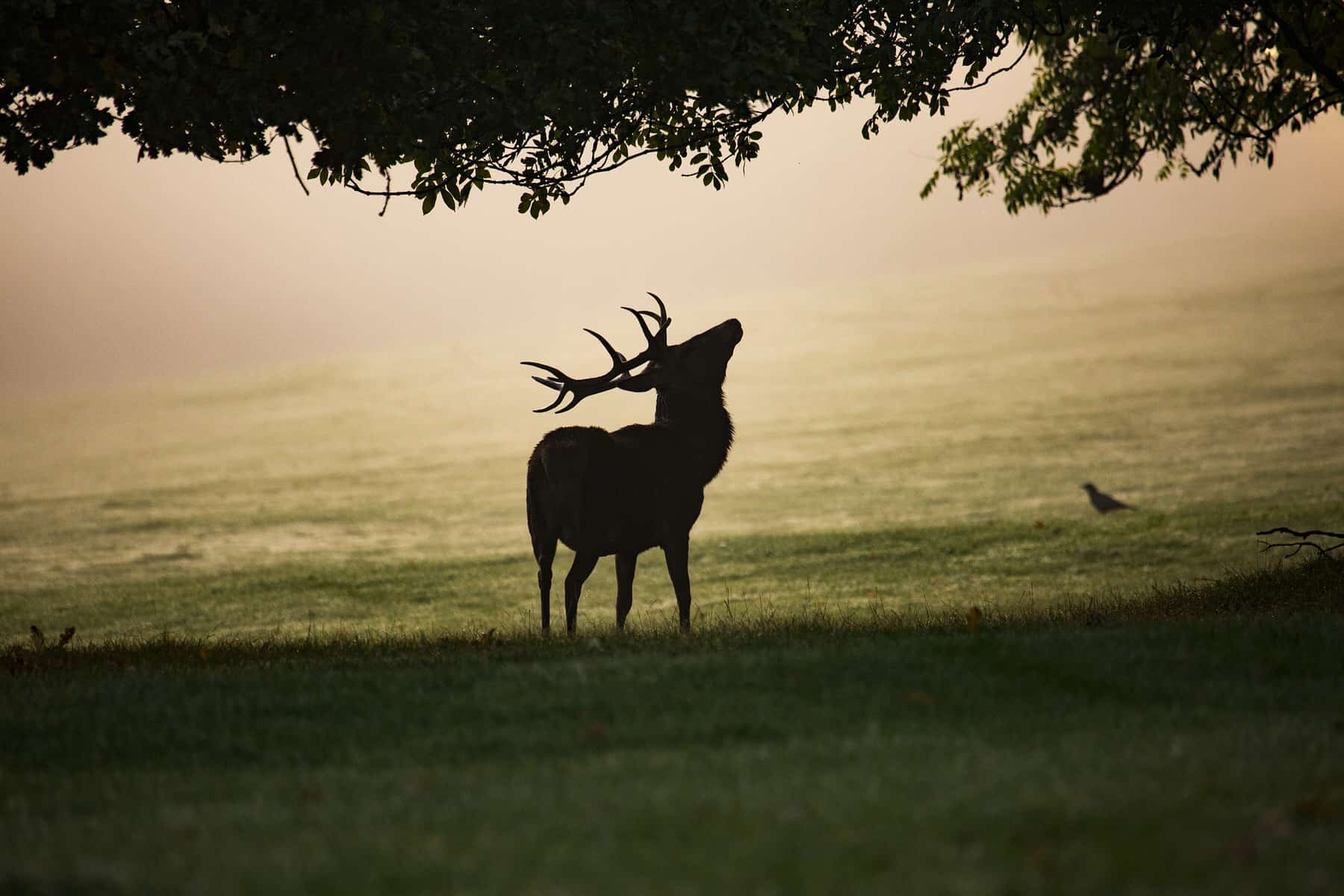
They have no natural predators here so can be seen grazing out in open areas of grassland. This is especially the case with the larger breeds, Red, Sika and Fallow that need to graze for longer and on more of a variety of plant matter. The smaller breeds graze mainly on younger shrubs and foliage.
Deer are a variety of mammal known as ruminants. These are a group of herbivores that are able to obtain nutrients from their plant based diet by fermenting the food in a specialised stomach prior to digestion. The fermentation happens due to the presence of specialised microbes. This part of the digestion process takes place in the deer’s foregut and requires fermenting plant matter, known as the cud, to be regurgitated and chewed again before swallowing back down for further fermentation. This happens twice before the bolus of food moves further back along the digestive tract.
This process of chewing, swallowing and regurgitation before fermentation is called rumination, hence the name ruminant. This process allows ruminants, such as deer, to fully absorb nutrients from the plant matter.

Deer produce smooth, dark pellet like scat. Their poo is pointy at one end and are usually in clusters. Due to the rumination process the droppings have no visible content due to the efficient digestion process so all of the plant fibre is fully broken down.
Each of the UK species of deer have similar tracks, they will just vary in size depending on the size of the species and the individual. Their hooves splay as the deer transfers its weight through the limb, leaving a gap between the two toes which is evident in its print.
Deer prints are usually pointed at the front as the two toes elongate towards each other forming a tear drop shaped print. The toes have a more defined point in the younger individual compared to a more rounded, smoother point in that of an older deer. The point at the front of the print will indicate its direction of travel and if a series of prints can be seen clearly, you may also be able to work out its gait too.
Squirrels
Squirrels aren’t always a popular mammal here in the UK, especially since the introduction of Grey Squirrels from America in the 1870’s. The Grey squirrels bought disease and proved to be tough competition for our native Reds. Since then the number of greys have risen to 2.5 million, while the number of reds have declined to a worryingly low 140,000.
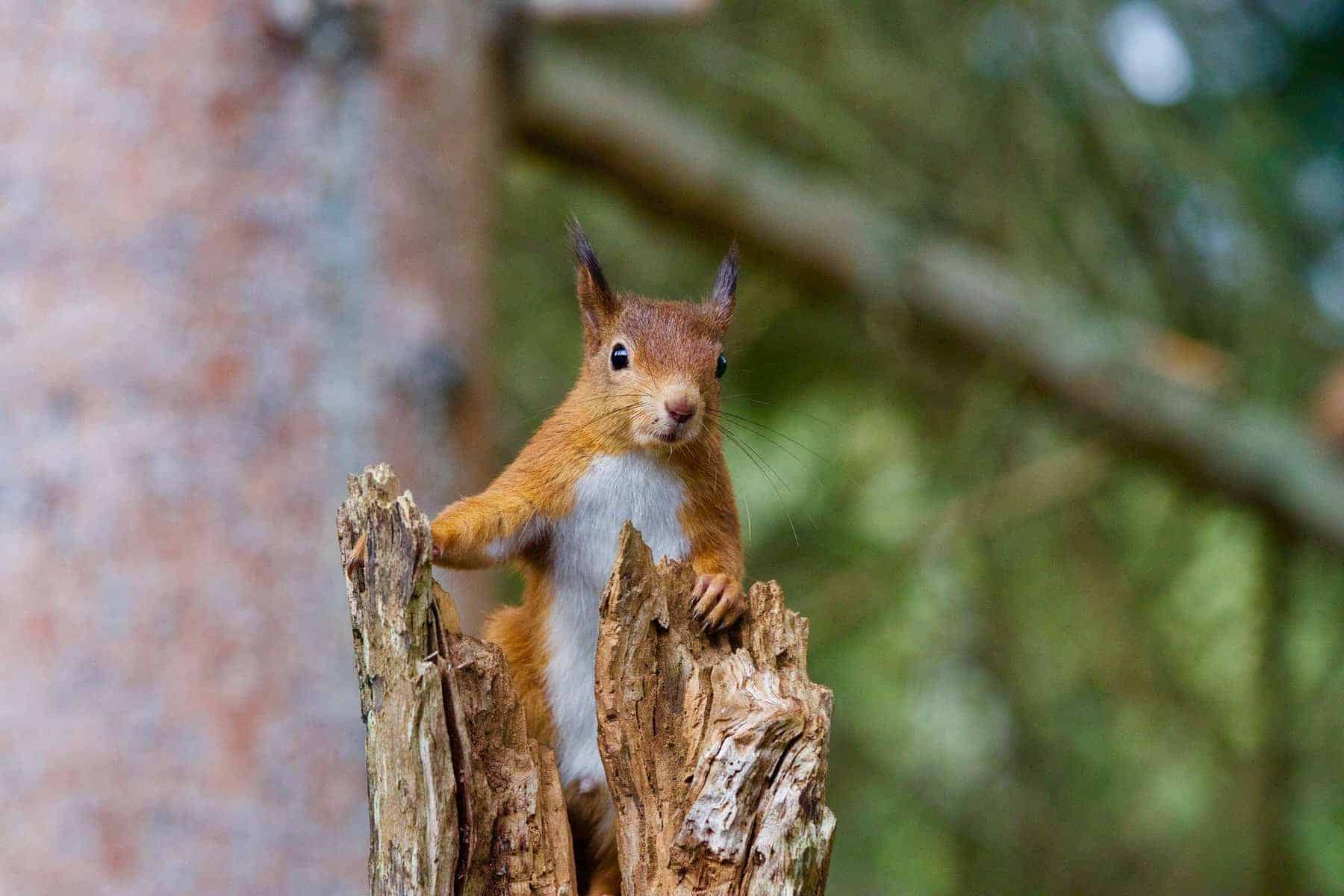
Red Squirrels spend most of their time up in trees compared to the greys but they can still be spotted if you look carefully. Our native Red Squirrels can be found in Scotland and areas of Northumberland, Northern Ireland and the Lake District. In some of these areas both reds and greys can be found sharing habitats.
Off of the Dorset coast, in Poole Harbour, there is a safe haven for Red Squirrels on Brownsea Island. Although Grey Squirrels are strong swimmers, the strong tidal pull in and out of Poole Harbour is too strong for the greys to get across, so the reds are safe, and widely treasured, there.
Evidence of squirrels can be found by looking up in the trees as well as on the forest floor. If you can see what looks like a messy bundle of twigs in close to the tree trunk then this is likely to be a squirrel’s nest, known as a drey.
Squirrels are mainly solitary animals, but will happily share dreys, especially in winter to share warmth. They often have multiple dreys to share just in case any become damaged. This sharing of dreys stops while a female is raising a litter of Kits. She will usually have two litters a year, the first is as early as February.
A squirrel will have a summer and a winter drey. The summer drey is a minimal nest, just enough for light protection and a comfy place to rest. Where as a winter drey is a more rigid structure the size of a football. It is made up of multiple layers of twigs with layers of warm insulating nest materials, such as grass, feathers and moss on the inside.
Some squirrels utilise abandoned holes made by woodpeckers. They line these in a similar way to their outdoor drey and gnaw the entrance to a suitable size. Through the winter months squirrels chose to stay in their drey for a few days at a time but don’t actually hibernate.
Squirrels are actually omnivores, as well as their well known diet of nuts, seeds and berries, they also eat a variety of eggs, small mammals and even young snakes. Due to this varied diet, squirrel scat can vary too depending on what food is available at that time of year. Squirrel poo looks very similar to rat scat but is bigger, fatter and turns grey as it ages, especially if there is bone content.
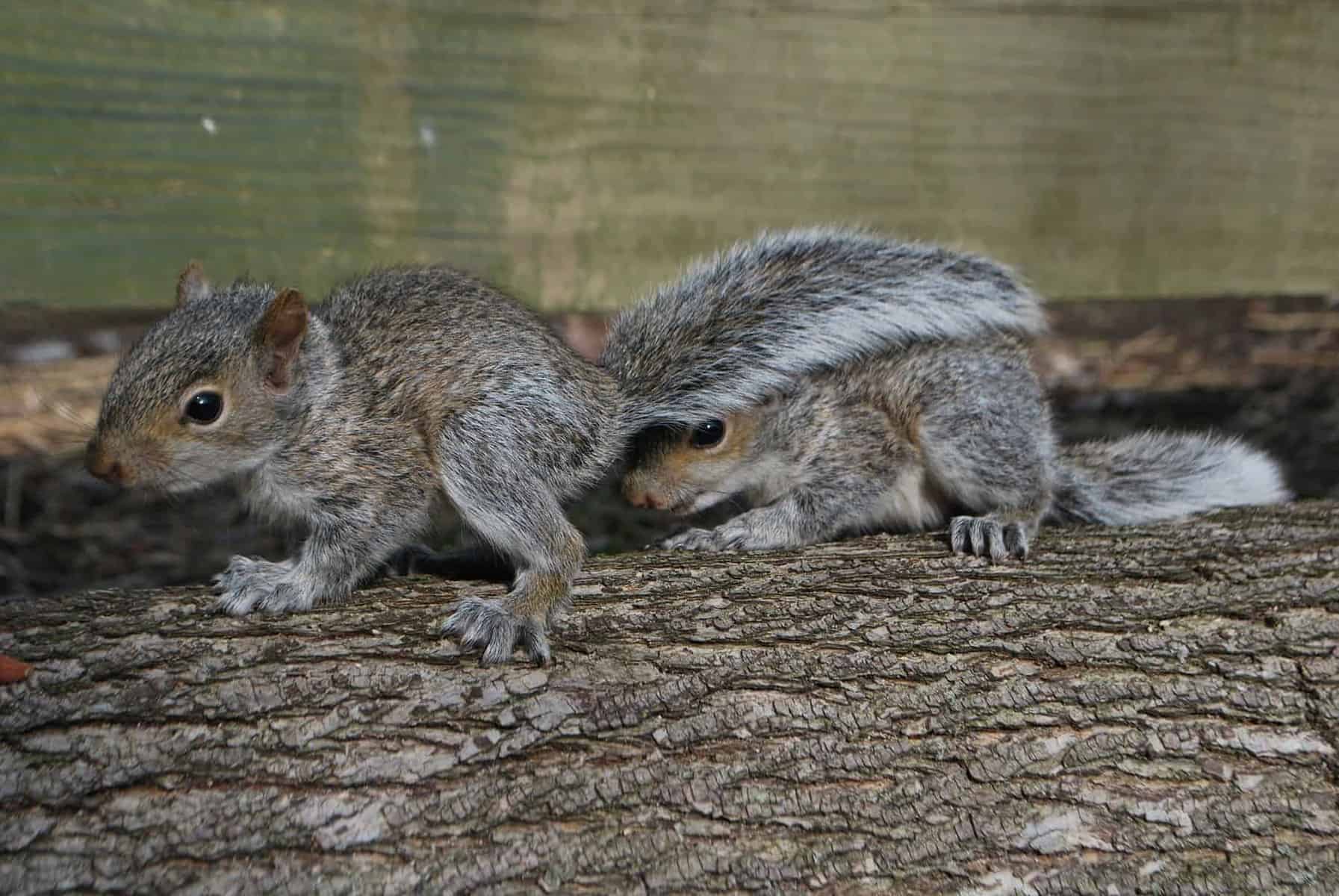
Droppings are usually found near the base of the tree where there drey is, and females with young can be seen removing the kits scat from the nest. They do this not just to keep the nest clean, but to keep the kits healthy and to prevent the attraction of predators.
Both red and greys have similar paw prints with their hind paws being larger than their fore paws. Their fore paws are approximately 1cm by 1cm, while the hind paws are 2cm long and 1cm wide. They have 5 toes which splay out as they weight bare to help them balance so their toes after look more finger like when looking at their tracks.
Compared to the other animals we have looked at here, the squirrel prints can be a little harder to find. Firstly, they are very lightweight but secondly they often travel from tree to tree rather than coming down to the woodland floor to reduce their exposure to potential predators.
So while you’re heading out on your next adventures, just remember, you’re not as alone as you think you are….
